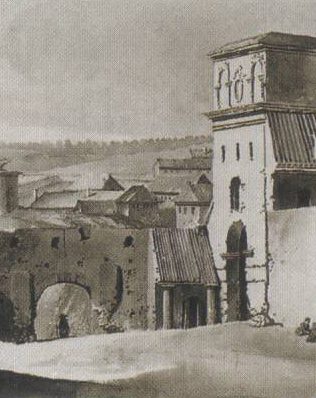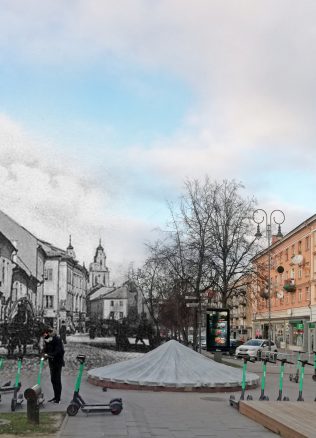Carnival in the Streets of Vilnius
Carnivals were a common sight in Europe in the Middle Ages and the Early Modern Period. During that time, the normal order of life changed: good became evil and vice versa. As Lent approached, people celebrated, ate, and raged. The rich disguised themselves as the poor, and the poor as the rich. Pieter Bruegel the Elder left us one of the best illustrations of this age old tradition in his painting “The Fight Between Carnival and Lent.”
Archive books from the Vilnius Council retained a complaint filed by two Jewish Vilnans, Aaron Lewkowicz and Mojżesz Jakubowicz, on 13 February 1673. The document states “In the current year, one thousand six hundred seventy-three, the twelfth day of the month of February, the aforementioned Lord Italians, having undertaken evil council, harmful to poor people, having dressed themselves up in some sort of strange, never-before-seen garb, in turbans, Turkish style, with masks on their faces, contrary to the custom of this city, around ten people, and offering the occasion and incitement to the common people for tumults to the great and unbearable harm of the plaintiff s, driving back and forth several times on two sleighs on German Street, purposefully passing [the entrance to] Jewish Street, seeking a cause and an occasion for a tumult, they ordered their sleigh drivers to beat the Jews with their whips on their faces, their eyes, which they did indeed do.”
The Italians mentioned in the complaint were Bartłomiej Tukan, Józef Bonfili, and Bartłomiej Cynaki, were citizens of Vilnius. Józef Bonfili was married to a local Lutheran, while Bartłomiej Cynaki was the royal secretary and a burgomaster of Vilnius. He would later become the Wójt (or the mayor in current terms) of the city.
Learn more about the attacks on Jews by clicking this link.



